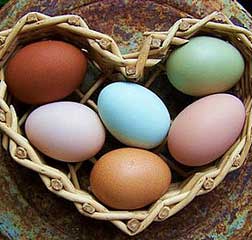photo | credit 1_ http://www.nytimes.com/2009/04/30/nyregion/30towns.html
EN_ IMAGINING PUBLIC LIVESTOCK IN THE CITY
The grant provides seed funding for the book—From Barnyard to Backyard: The Urban Livestock Revolution. The book will explore the questions: What could the raising of animals for food mean for Canadian cities? Can animal husbandry be integrated safely, humanely and appropriately in the urban context and, if so, what are the implications for urban design and planning? Why is our sense of what it means to be urban so threatened by any suggestion of urban livestock food production? Is the pervasive resistance to opening up our cities to include food animals a protection of the urban ideal or an inherent stifling of its possibilities? Through stories and profiles, this book will explore precedents, examining the ways that some North American cities are finding a place for livestock within the urban fabric, changing the city landscape from food-poor to food-filled and, in the process, forcing us to question what we want our cities to be.
Updates_ Mises à jour
"Imagining Public Livestock in the City," was published as an article in a book called Integrated Urban Agriculture: Precedents, Practices, Prospects (edited by Robert L. France, pub by Libri Publishing, 2016). The article was accepted as completion of a reduced grant (50%).
Article by Lorraine Johnson published within this edition of Integrated Urban Agriculture
FR_ IMAGINANT LE BÉTAIL EN VILLE...
Cette subvention servira de financement initial à la publication du livre From Barnyard to Backyard: The Urban Livestock Revolution. L’auteure s’interroge sur une foule de sujets : Quelles sont les retombées possibles de l’élevage à des fins alimentaires dans les villes canadiennes? Peut-on intégrer un type d’élevage sûr, sans cruauté et approprié à un contexte urbain, et le cas échéant, quelles seront les incidences sur l’urbanisme et la planification des villes? Pourquoi croit-on que notre conception de l’urbanité est menacée par toute suggestion de production animale alimentaire en ville? La résistance généralisée à l’accueil dans nos villes d’animaux destinés à l’alimentation est-elle une forme de protection de l’idéal urbain ou un frein à l’innovation? À l’aide d’anecdotes et de portraits, l’auteure explore les précédents en la matière, examinant comment des villes nord-américaines accordent une certaine place à l’élevage dans le tissu urbain, ce qui fait passer le paysage urbain de la non-production à la production et nous oblige à nous interroger sur le type de villes que nous souhaitons.


